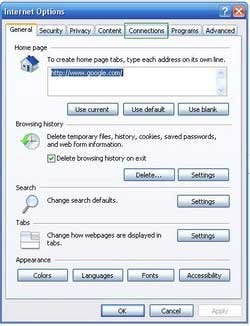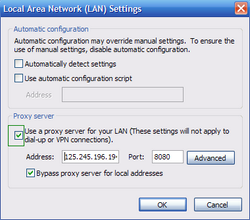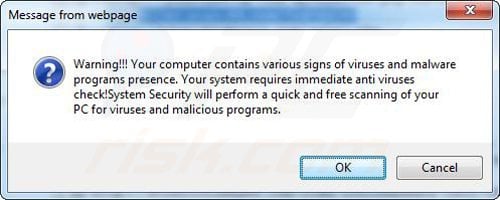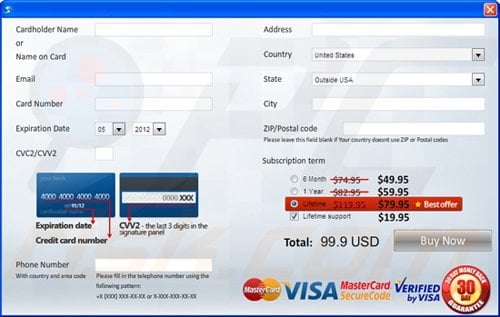Internet Protection virus
![]() Written by Tomas Meskauskas on (updated)
Written by Tomas Meskauskas on (updated)
What is Internet Protection?
Internet Protection is rogue software that imitates the processes of a real security program in order to scare computer users into thinking that their PCs are at risk. This misleading program is designed to scare you into purchasing a fake license.
When this program self-installs, it performs fake security scans and will report that it has detected many infected files. This bogus program displays non existent files and suggests that these files are infected with spyware and viruses.

You should ignore the warning messages, since this program's sole objective is to steal money from your credit card account. Always research before buying computer antivirus or anti-spyware programs, since the Internet is flooded with fake security software.
When this program infects your system, it will perform a fake security scan on system start-up. If you have already bought this fake security program, contact your credit card company and dispute the charges.
To further scare you into purchasing a fake license, this program will report that your social network account is under attack or that your credit card information is at risk. To deal with these purported errors and risks, you will be asked to purchase the Internet Protection program.
Ignore the warning messages and remove this bogus program from your computer. Your computer has none of the security infections that Internet Protection has supposedly detected.
This program was created by Internet criminals who make money from PC users who fall for their trickery and purchases Internet Protection to remove security threats. This program is rogue software, relying on falsely generated messages and does not scan your computer for malware.
You should not consider buying a license key; use this removal guide to remove Internet Protection.
The following fake security messages will be displayed by Internet Protection:
"Internet Protection. Your system is under attack by harmful software. Click here to deactivate it."
"Internet Protection. External software is trying to control a variety of your system files. This may lead to breaking into some data on your system. Click here to protect remote access to your PC and delete these programs."
"Internet Protection. The Spyware.IEMonster process is found. The virus is going to send your passwords from Internet browser (Explorer, Mozilla Firefox, Outlook and others) to third-parties. Click here for further protection of your data with Internet Protection."
Ignore these fake alerts and remove this rogue antivirus program from your computer.
Instant automatic malware removal:
Manual threat removal might be a lengthy and complicated process that requires advanced IT skills. Combo Cleaner is a professional automatic malware removal tool that is recommended to get rid of malware. Download it by clicking the button below:
▼ DOWNLOAD Combo Cleaner
By downloading any software listed on this website you agree to our Privacy Policy and Terms of Use. To use full-featured product, you have to purchase a license for Combo Cleaner. 7 days free trial available. Combo Cleaner is owned and operated by Rcs Lt, the parent company of PCRisk.com read more.
Quick menu:
- What is Internet Protection?
- STEP 1. Remove Internet Protection using a registration key.
- STEP 2. Remove Internet Protection using Safe Mode with Networking.
- STEP 3. Remove Internet Protection manually by deleting files and registry entries.
Remove Internet Protection automatically
Before downloading the remover, click the "Activate" button on the Internet Protection window, and enter this serial key: D13F-3B7D-B3C5-BD84 This will enable Windows features, previously disabled by Internet protection spyware.
"Internet Protection" virus manual removal
1. Start your computer in Safe Mode. Click Start, click Shut Down, click Restart, click OK.
During your computer starting process press the F8 key on your keyboard multiple times until you see the Windows Advanced Option menu, then select Safe Mode with Networking from the list.{jcomments on}

Video showing how to start Windows in "Safe Mode with Networking":
Windows XP:
Windows 7:
Windows 8:
2. Open Internet Explorer, click Tools and select Internet Options. Select "Connections".


3.Click LAN settings, if 'Use a proxy server for your LAN' is checked, uncheck it and press OK.


3. Download legitimate anti-spyware software to fully remove Internet Protection from your computer.
If you are unable to remove Internet Protection, you can use these manual removal instructions. Use them at your own risk, since if you do not have strong computer knowledge, you could harm your operating system.
Use them only if you are an experienced computer user. (Instructions on how to end processes, remove registry entries...)
End these Internet Protection processes:
[random].exe
Remove these Internet Protection registry entries:
HKEY_CURRENT_USER\Software\Microsoft\Windows\CurrentVersion\Run '"[random]"
Delete these Internet Protection files:
c:%UserProfile%\Desktop\Internet Protection.lnk
c:%UserProfile%\Local Settings\Temp\ins1.tmp
c:%UserProfile%\Local Settings\Temp\mv2.tmp
c:\Program Files\Internet Protection\
c:\Program Files\Internet Protection\Internet Protection.dll
Summary:
The fake antivirus programs (also known as "rogue antivirus programs" or "scareware") are applications that tries to lure computer users into paying for their non-existent full versions to remove the supposedly detected security infections (although the computer is actually clean). These bogus programs are created by cyber criminals who design them to look as legitimate antivirus software. Most commonly rogue antivirus programs infiltrate user's computer using poop-up windows or alerts which appear when users surf the Internet. These deceptive messages trick users into downloading a rogue antivirus program on their computers. Other known tactics used to spread scareware include exploit kits, infected email messages, online ad networks, drive-by downloads, or even direct calls to user's offering free support.
A computer that is infected with a fake antivirus program might also have other malware installed on it as rogue antivirus programs often are bundled with Trojans and exploit kits. Noteworthy that additional malware that infiltrates user's operating system remains on victim's computer regardless of whether a payment for a non-existent full version of a fake antivirus program is made. Here are some examples of fake security warning messages that are used in fake antivirus distribution:


Computer users who are dealing with a rogue security software shouldn't buy it's full version. By paying for a license key of a fake antivirus program users would send their money and banking information to cyber criminals. Users who have already entered their credit card number (or other sensitive information) when asked by such bogus software should inform their credit card company that they have been tricked into buying a rogue security software. Screenshot of a web page used to lure computer users into paying for a non-existent full version of internet protection rogue and other rogue antivirus programs:

To protect your computer from internet protection rogue and other rogue antivirus programs users should:
- Keep their operating system and all of the installed programs up-to-date.
- Use legitimate antivirus and anti-spyware programs.
- Use caution when clicking on links in social networking websites and email messages.
- Don't trust online pop-up messages which state that your computer is infected and offers you to download security software.
Symptoms indicating that your operating system is infected with a fake antivirus program:
- Intrusive security warning pop-up messages.
- Alerts asking to upgrade to a paid version of a program to remove the supposedly detected malware.
- Slow computer performance.
- Disabled Windows updates.
- Blocked Task Manager.
- Blocked Internet browsers or inability to visit legitimate antivirus vendor websites.
If you have additional information on internet protection rogue or it's removal please share your knowledge in the comments section below.


▼ Show Discussion